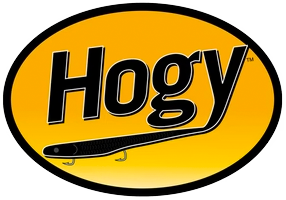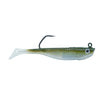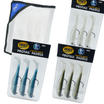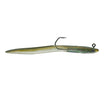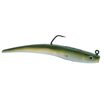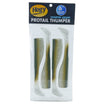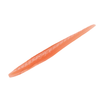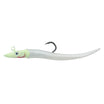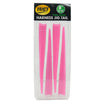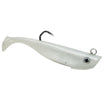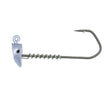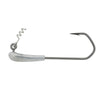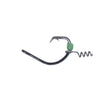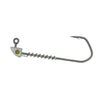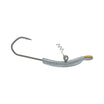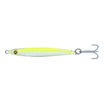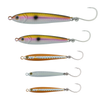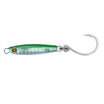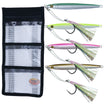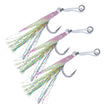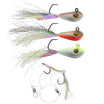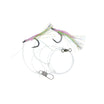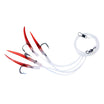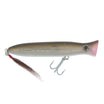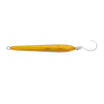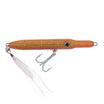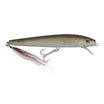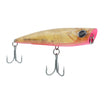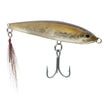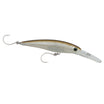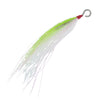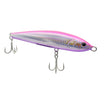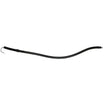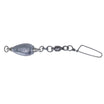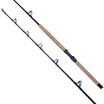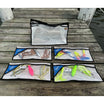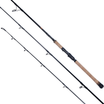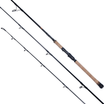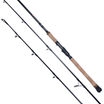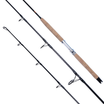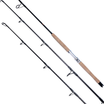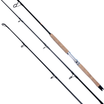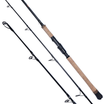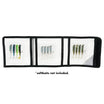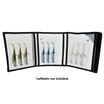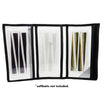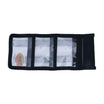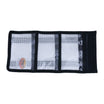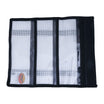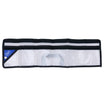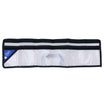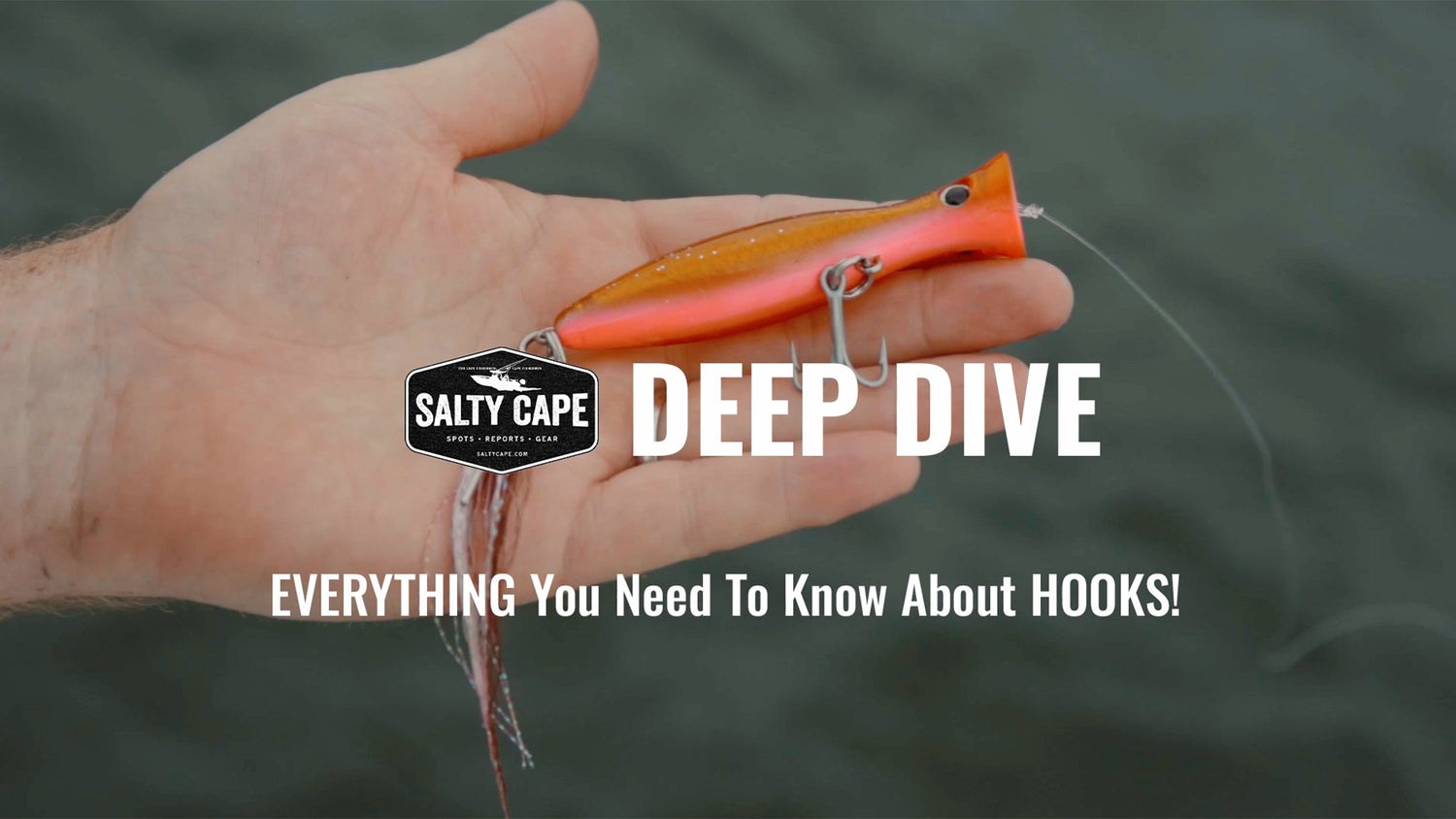J Hooks:
When choosing J hooks for your lures, it's crucial to understand the various types of J hooks and how their orientation can impact the lure's performance. Here’s a detailed guide that includes factors like hook types, number of hooks, size, wire gauge, and orientation for swimming plugs, poppers, and pencil poppers.
Types of J Hooks
J-hooks represent any “single” hook. Different types of J-hooks include but are not limited to:
- In-Line Hooks: In-line hooks have a hook-eye that is turned “up” so that the loop of the hook eye is “in-line” with the hook shank. An In-Line hook is most similar to a live bait hook and a good and popular option for plugs and jigs a like. The In-line eye configuration allows for a j-hook placement on a lure so that the hook is orientated upward or downward with just one split rig, as opposed to a tradition j-hook with the hook eye perpendicular to the hook shank, which results in a less effective -side facing hook orientation on a lure. If all you have is a traditional J-hook, you can remedy the “side facing” orientation with two split rings. While this works, it adds clunky hardware to the lure. In-Line hooks are your best option for re-rigging plugs for simple fix with properly oriented hooks up or down. In-Line hooks are a little less strong as compared to a “live bait hook.
- Siwash Hooks: Si-was hooks, particularly popular in the Northwest, offer a massive amount of hook gap and are excellent at keeping fish hooked for this reason. Most Si-Wash hooks come with an “open hook eye” that eliminated the need for using a split ring when attaching it to a plug. Make sure the lure has a heavy enough hook eye to support this. A split rig helps distribute the torque of a twisting fish on the line. S-Wash hooks are often used on large, heavy duty pencil poppers with heavy inline configurations.
- O’Shaughnessy Hooks: O’Shaughnessy Hooks typically have a very long hook shank and hook gap that is in between a In-Line or Live bait hook and a Si-Wash hook. O’Shaughnessy Hooks are less common in plugs bit can certainly be used. Since they have a traditional hook eye, you will need at least two split rigs to orient the hook properly.
- Live Bait Hooks: True to their name, live bait hooks were originally designed for use with live bait. They come in both thin and thick hook gauges. Since the hook eye is traditionally oriented perpendicular to the hook shank, you will need two split rigs to attached a like bait hook to orient the hook point upward or downward relative to the lure, the best hook setting directions addressing strikes from every diection. Live bait hooks are the strongest hooks on the market.
- Circle Hooks: Circle hooks are designed such that their hook point is turned inward, such that if a fish were to swallow a “live” or “dead” bait, the hook would not hook inside the gills but rather catch the corner of the fish’s mouth on the way out. You really don’t see circle hooks on lures all that option. That said, at Hogy, we have R&D budget pointed toward studying these hooks on lures.
J-Hook Bullet Points:
- Simplicity: J hooks are easier to unhook fish, reducing handling time and potential harm.
- Single Point Penetration: They often result in a deeper, more secure hook set, especially for larger fish.
- Less Snagging: J hooks have a reduced chance of snagging on underwater obstacles, vegetation, or the angler.
- Hook Wire Gauge: Since here is only one “hook” point on a J-hook, typically with a wider hook gap, ta thick wire gauge on a J-Hook is more easily accomplished.
- Orientation: Facing Up or Down: The orientation of J hooks can influence the action of the lure.
- Tail Hooks: facing up can reduce snagging on the bottom, while hooks facing down can enhance hook-up rates when fish strike from below.
- Belly: Always have the hook facing down, otherwise the lure’s body will “block” the hook from finding the fish
- Combo: It’s common practice for lures with two J-Hooks to rig the belly “J-Hook” facing downward and the tail hook facing upward. You have all directions covered this way.

Treble Hooks:
In Saltwater, you hear little discussion of different types of treble hooks but there are a few variations. Unlike J-hooks where there are very noticeable shape differences, the variation s in trebles is proportional:
- Classic: A classic treble is the one you imagine when picturing a treble hook. Three points arranged equidistantly around the central shank. The length of each point from the bend to the tip is usually about 1/3 to 1/2 the overall height of the hook. The gap typically measures about 1/3 to 1/2 of the distance from the hook point to the central axis of the shank. This ensures enough space for effective penetration without compromising the hook’s holding power. The wire gauge of the shank can vary (e.g., standard, 2X, 3X, 4X), with thicker gauges providing more strength. A classic treble is by far the most common configuration and what we use on all our inshore plugs.
- Short Shank: A short shank treble has a hook shank that is so short, that the hook points with typical gap, and length of a classic treble within the size class reach 2/3s the way to the hook eye. The shorter hook shank length results in a stronger hook as a result of less leverage opportunities and also less opportunity to snag the line during a cast. We use short shank 6X trebles on our tuna plugs for these reasons.
- Extra Wide Gap: Extra wide gap treble hooks are similar to round bend classic trebles but offer even wider gap, sometimes as much as 2x the gap. The extra gap results in a better landing ratio at the cost of a weaker hook. Sometimes the gap can be too wide, and the strike is missed as the fish struggles to get both the lure and the hook it it’s mouth. At Hogy, we feel the shortcomings of an extra wide gap hook offset it’s pros.
Treble Hook Bullet Points:
- Increased Hook-up Ratio: With three points, treble hooks increase the likelihood of a successful hook set, especially with fast-striking species.
- Less “Gullet Hooks”: Treble hooks are often snag on the fishes mouth on the “inbound” journey.
- *Higher Risk of Injury: Treble hooks when in stalled in multiple instances throughout the plug can cause more damage to fish and be harder to remove, as compared to multiple J-hooks on the same lure, thereby increasing mortality rates in catch-and-release fishing.

